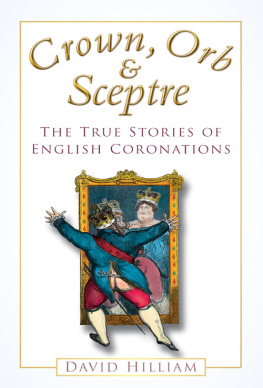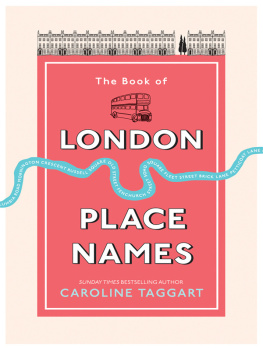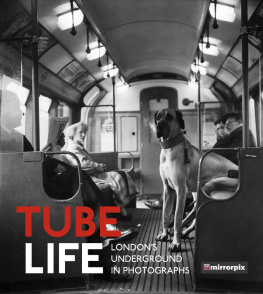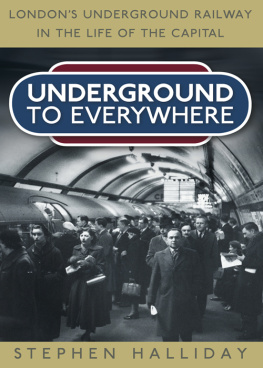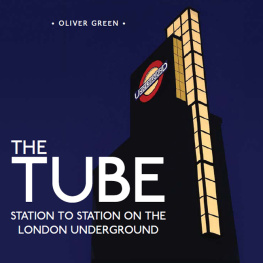The names of the 300 or so London Underground stations are so familiar to us as we strap-hang our way across the capital that we take them utterly for granted. We hardly ever question their meanings or origins yet these well-known names are almost always linked with fascinating stories of bygone times.
Until the mid-nineteenth century, London was unbelievably rural, with names belonging to a countryside that we would neither recognise nor could imagine today. The old fields and turnpikes, market gardens and trees and bushes have completely disappeared, but their names still remain given extra permanence as they are now forever enshrined as parts of our Underground network.
But who, in the twenty-first century, thinks of a real flesh and blood shepherd lolling back on a specially trimmed hawthorn bush, when travelling through Shepherds Bush Underground Station? Who nowadays thinks of the original gigantic Fairlop Oak at the far end of the Central Line? And who, travelling through Totteridge and Whetstone on the Northern Line, imagines medieval soldiers sharpening their swords and daggers at the aptly named Whetstone just before engaging in the appallingly bloody battle of Barnet?
What about all those fifth-and sixth-century Saxon chieftains all bringing their families and followers to settle into what was dangerous new territory for them on a foreign island? Padda and Tota, Brihtsige and Wemba none of them have any memorial, except that we unconsciously use their names as we speak of Paddington, Tottenham, Brixton and Wembley.
This book is not about the Underground itself, but about the names to be found on the network lines. It is hoped that both hardened old commuters and fresh-eyed new visitors to London will find this collection of origins an intriguing pathway into the rich, half-hidden history of Englands capital
and as an extra, the second part of this book contains a short selection of other well-known London place-names with particularly interesting derivations.
David Hilliam
The history of the various London Underground lines is complicated, as they were gradually formed bit by bit through the amalgamation of different railway companies. However, here is a much-abbreviated timeline.
| 1863 | 9 January | Metropolitan Line opens: Paddington to Farringdon |
| 1864 | 13 June | Hammersmith and City Line opens |
| 1868 | 1 October | District Line opens: High Street
Kensington to Gloucester Road |
| 1884 | 6 October | Circle Line completed |
| 1890 | November | Northern Line opens |
| 1898 | 11 July | Waterloo and City Line opens |
| 1900 | 27 June | Central Line opens |
| 1906 | 10 March | Bakerloo Line opens |
| 1906 | 15 December | Piccadilly Line opens |
| 1969 | 7 March | Victoria Line officially opened: Warren Street to Victoria |
| 1979 | 1 May | Jubilee Line opens |
| 1987 | 31 August | Docklands Light Railway opens: Tower Gateway and Stratford to Island Gardens |
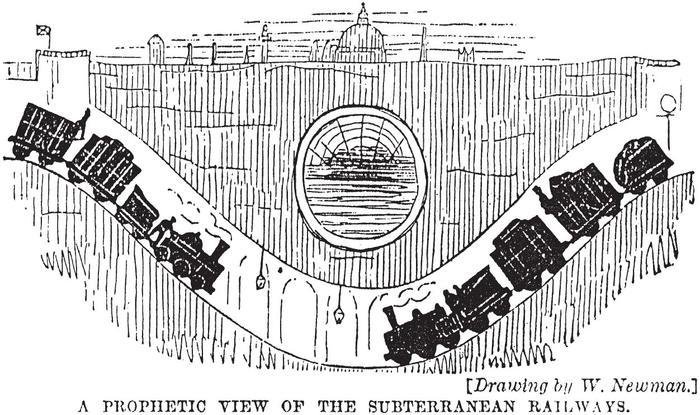
A cartoon in Punch, 26 September 1846, when the London underground railway was first proposed. The very idea was considered to be ludicrous.
Most of the illustrations are taken from Old and New London by Walter Thornbury and Edward Walford, published in 1897 by Cassell and Company Ltd. The exceptions are: the cartoon A Prophetic View of the Subterranean Railways, which appeared in Punch on 16 September 1846; the illustrations of Old Charing Cross, Swiss Cottage and the Fairlop Oak, which were taken from London Stories by John O London; and the drawing of the bulls head at Hornchurch, which was drawn by the author.
AZ OF TUBE
STATION NAMES
ACTON TOWN W3
District and Piccadilly
Originally opened on 1 July 1879 as MILL HILL PARK
Name changed to ACTON TOWN on 1 March 1910
Acton means farm among the oak-trees coming from two Saxon words: ac, oak-tree and tun, farm or settlement. Most English place names beginning with Ac derive from the once plentiful crop of oak trees that grew there. There are over twenty other Acton place names in the British Isles.
ALDGATE EC3
Circle and Metropolitan
Opened on 18 November 1876
Old Gate. One of the six gates built by the Romans in Londons city wall. From here the road from London led to the Roman capital of Britain Colchester. The gate was already old when the Saxons came here in the fifth century, so they called it Ealdgate. Pulled down in 1761, its name still lives on as an Underground station.
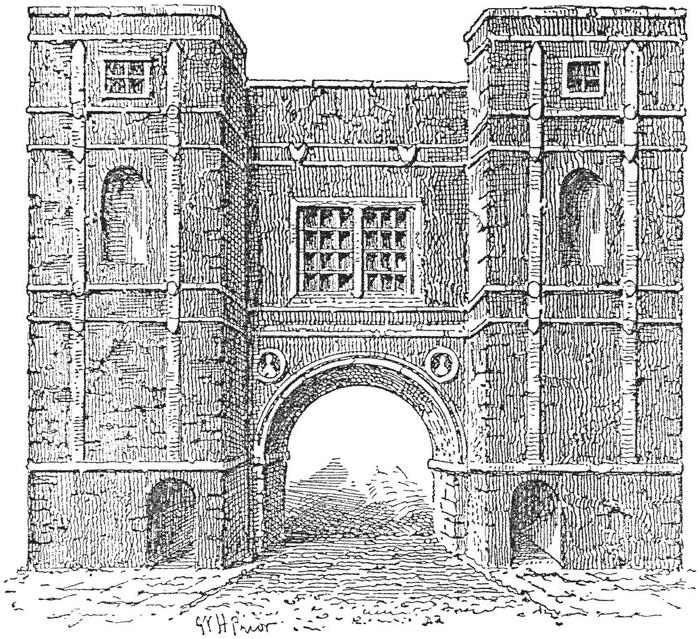
The original Aldgate, demolished in 1761.
ALDGATE EAST E1
Hammersmith & City, District
Opened on 6 October 1884
Re-sited on 31 October 193
Obviously the name is borrowed from Aldgate, the Underground station that had been opened eight years earlier. It had been proposed to call it Commercial Road, but in the end the name Aldgate East won the day, despite the fact that it is not sited particularly close to the original London gate. See ALDGATE.

ALDWYCH WC2
A lost station on the Piccadilly Line
Opened as STRAND on 30 November 1907
Name changed to ALDWYCH on 9 May 1915
Closed on 30 September 1994
Old Underground maps show Aldwych at the end of a branch-line from Holborn. Although now no longer in use, the name is too interesting to forget. When the Saxon King Alfred (871899) defeated the invading Danes, he generously allowed some of them to live on in this area, under his rule. At that time it was well outside the city walls.
This Danish settlement was known by the Saxons as Aldwic the old village and the Church of St Clement Danes is said to be on the site of the old Danish burial ground. Drury Lane was known as Via de Aldwych in the Middle Ages, and the name was revived when this part of London, together with an Underground station, was modernised in the early twentieth century.
Sadly, Aldwych Underground Station was closed on 30 September 1994. It is one of more than forty London Underground stations that have closed or been re-sited over the years.
ALL SAINTS E14
Docklands
Opened on 31 August 1987
Named after All Saints church in East India Dock Road, which was built in the years 182123. The parish of Poplar was created in 1821 and the parishioners raised over 30,000 a very considerable sum in those days to build their parish church. Designed by Charles Hollis, the church was consecrated in 1823.



